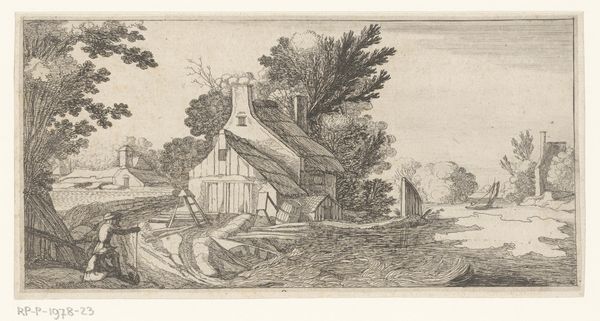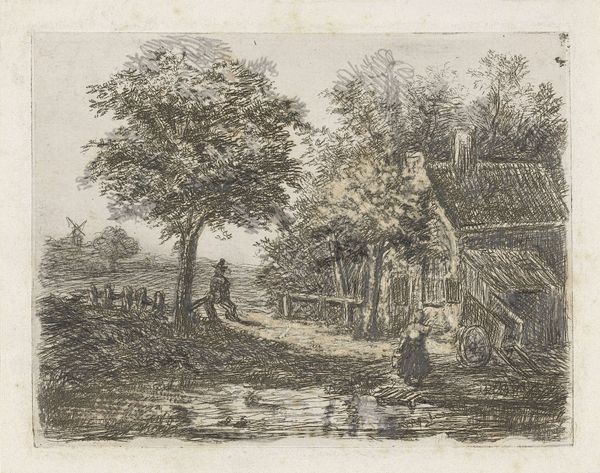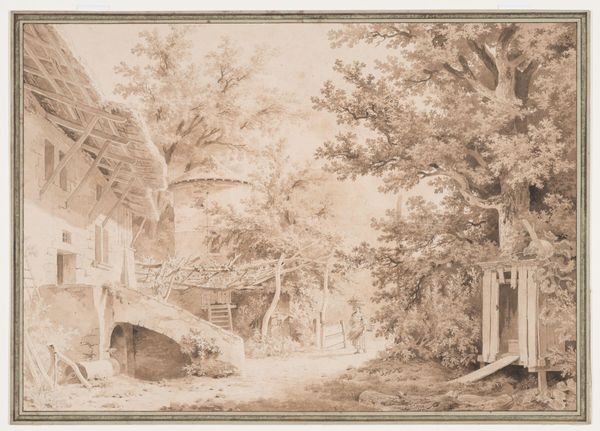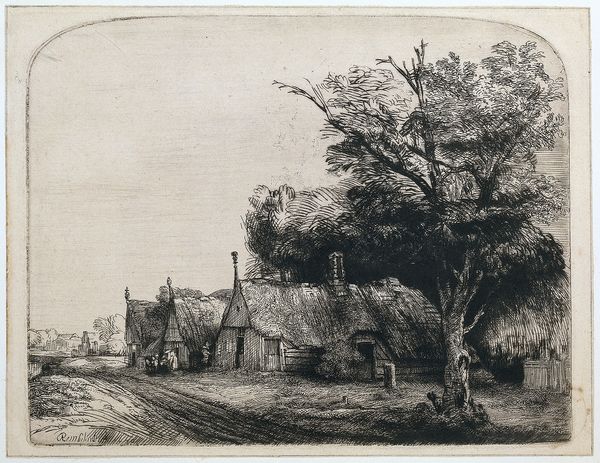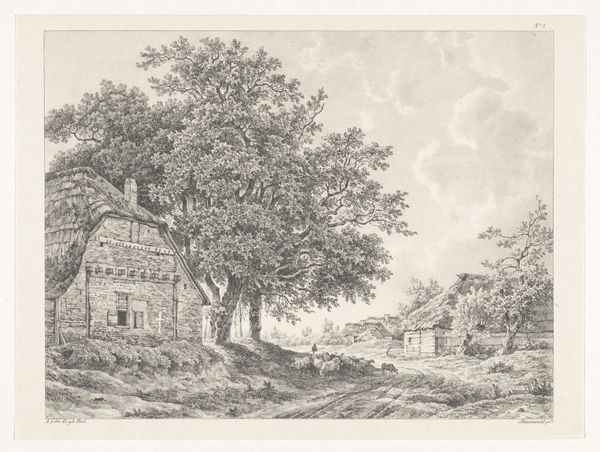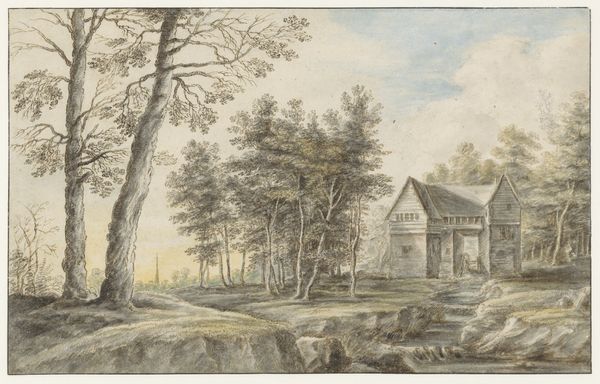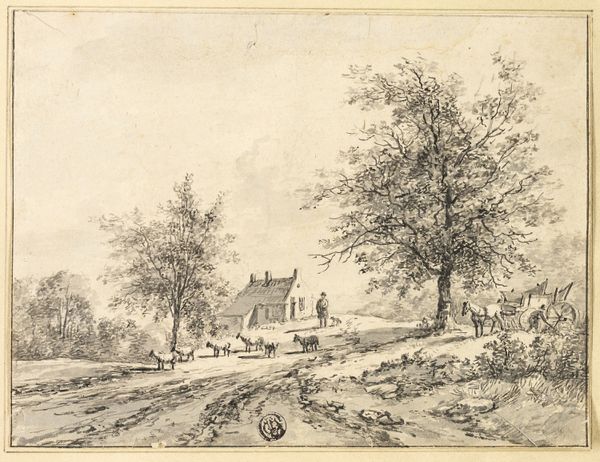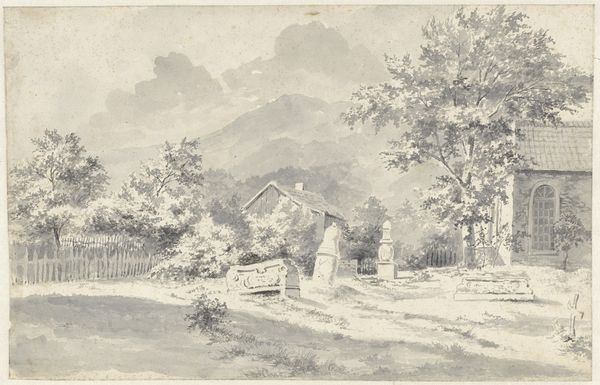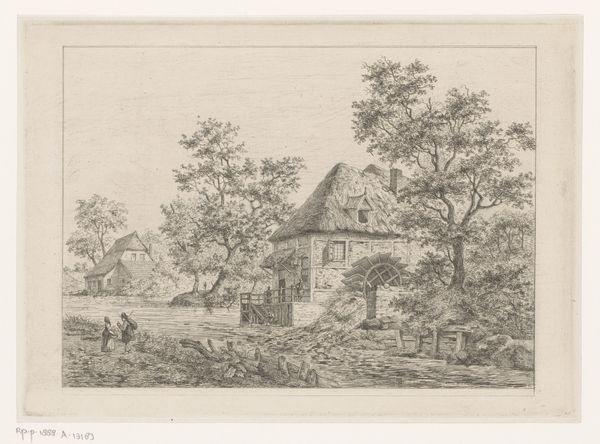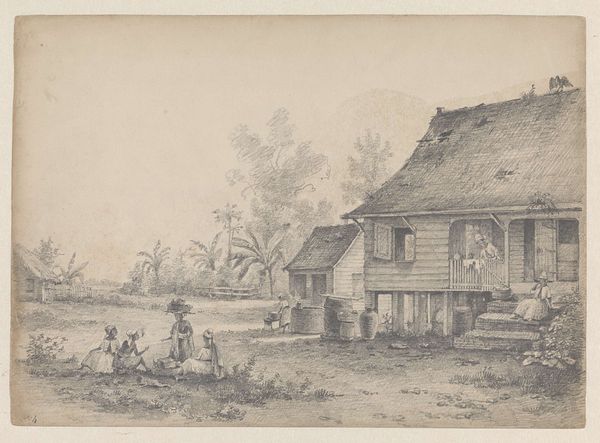
Dimensions: sheet: 11 13/16 x 16 1/8 in. (30 x 41 cm)
Copyright: Public Domain
Curator: I find the drawing "Swiss Farm ('Hirtenhof')", rendered in pencil around 1827-1909 by Robert Zünd, to be particularly striking. Its almost monochromatic quality gives it a serene feel. What's your first take? Editor: Well, immediately I'm struck by the texture. The use of pencil creates such a tangible surface. You can almost feel the rough-hewn wood of the farmhouse, the grassy texture of the foreground, and even the soft, dense foliage of the trees. Curator: Absolutely. Zünd's precise and meticulous rendering speaks to his deep understanding and skillful application of the medium. I am particularly intrigued by how he translated the textures through subtle gradations of shading, especially considering this appears to be a plein-air sketch intended for future use. Editor: Right. Looking at it through the lens of labor, one must consider the hours spent, possibly outdoors, carefully transcribing the observed reality. The choice of pencil is significant as well. Its relative accessibility speaks to the democratization of artmaking—a break from strictly commissioned and high-art studio work. Curator: That is quite a valid perspective, bringing in questions of art's accessibility and production. Zooming back in, what I observe is how the formal structure emphasizes depth. Zünd's employment of atmospheric perspective is brilliant. Look how he utilizes blurring and lightening to give us a clear sense of spatial recession. It creates an almost idealized rural life. Editor: I’d agree. And beyond mere aesthetics, think about the social narrative implied. A harmonious depiction of rural labor—people seemingly content, chickens pecking, wood stacked neatly. It perhaps presents a curated vision of the Swiss pastoral lifestyle of the period, carefully crafted for a burgeoning art market hungry for images of idyllic landscapes. Curator: A valid consideration; but from a purely aesthetic viewpoint, consider the composition as a series of carefully balanced forms and planes. The house to the left, the trees on the right. Then you've got that carefully staged choreography between shadow and light. The artist utilizes the light not just for clarity but to suggest, even elicit, emotional engagement. Editor: Yes, but I cannot divorce that from how these landscapes were commodified, transforming rural scenes into desirable objects for urban consumption. Even the technique becomes part of this cycle. Think of the pencils, the paper… all commodities produced for this artistic enterprise, shaping, and reshaping our relationship to the very concept of "nature." Curator: True, seeing it through that economic lens is interesting. Well, I leave having a renewed appreciation for Zünd’s craftsmanship. The detail makes the farm so alive. Editor: I concur. I have come to appreciate the narrative this work unwittingly presents about consumption, production, and how we continue to reimagine our connection to the world through art.
Comments
No comments
Be the first to comment and join the conversation on the ultimate creative platform.
